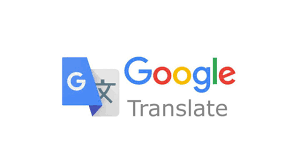Is Google Translate Good for Arabic in 2022?

When it comes to translation accuracy, nothing comes close to a professional native translator. Unfortunately, carrying a translator in your pocket is not that simple! When a quick translation is required, your smart phone may come in handy.
Google Translate has made it easier to use simple and fast translation services. It helps with communication without requiring you to pay for a translator.
For people who want to shop on overseas websites or read news articles in the Arabic language, Google Translate is a major help. But the question is how accurate is Google translate for Arabic translation? This is a question that must be answered.
The short answer is that for short sentences, it is relatively accurate, but for anything longer than paragraph or a page, it's not that good.
When you only need to translate a few words or sentences into Arabic, the results are relatively consistent. However, when you try to translate a full page or document, things start to fall apart rather quickly.
Yes, the text that has been translated is pretty accurate from a vocabulary standpoint. However, the sentences and meanings are not always accurate, since Arabic is a very poetic language, Google Translate always struggles to get the meaning across accurately.
What is Google Translate and how does it work?
If you have been on the internet for more than 30 minutes, then you probably know what Google Translate is. But just in case if you didn't know, Google Translate is a free service provided by the search engine giant. In 2006, Google launched this machine translation service. Since then, it has been growing exponentially.
To use it, simply type a phrase or word into the text field. Select the language that you’ll be translating. Also, decide which language you’ll be translating it into. Isn’t it simple?
The first thing Google did to acquire language data, it looked at documents from the United Nations and the European Parliament. And to improve translation accuracy. Artificial intelligence and machine learning were used to improve the software.
In 2016, Google pushed its translation services one step further. By switching to Neural Machine Translation, you’ll be able to save time and money (NMT). It is a method of deep learning. This entails utilizing a wide range of language resources.
What Are The Pros Of Using Google Translate?
Google Translate has used machine learning since its creation in 2006. Artificial intelligence is also being used to improve translations. Machine learning and artificial intelligence have gone a long way. These machines can now converse and comprehend almost as humans can in certain contexts.
They can understand natural language and respond to questions in a natural tone. The best translation tool available is Google Translate.
Furthermore, Google Translate has a number of outstanding features, including:
- Translating various sorts of language and speech.
- Translating handwriting and moving text within photographs.
- Supporting 109 languages at varying levels.
- Can be used with PCs, iPhones, and Android phones.
What Are The Cons of Google Translate?
If you wish to utilize Google Translate, don’t be surprised if things aren't up to standard. Because its translations are dependent on statistical data, it frequently makes mistakes. When working with sensitive data, creative texts, or business-related content, use caution. It should not be your primary source of translation. The general rule is that if you have something to lose, then use a professional translation service.
Because there is no way to add context to Google Translate, the content may lose its meaning during translation. The translation quality is determined by the language pair. For languages like Spanish or English, Google’s popular translations are more accurate. Translations for languages that have very different rules and style, for example when you use it to translate to Arabic in our case, the results are not very impressive.
Google Translate frequently produces translations that are riddled with grammatical problems. Grammatical rules are not taken into account by Google’s translation algorithm. There is no infrastructure in place for Google Translate to fix translation errors. There isn’t a way to report errors. There’s also no way to double-check what’s been translated.
While Google Translate is free and simple to use, it is also very limited due to the its made.
Conclusion
As you can see, the pros and cons of using Google are very clear. Google Translate may not be able to completely replace human translators at this time.
If you don’t have any other options and you need to translate something. Then use Google Translate to help you out. It is unlikely to have a significant impact on your life or business. If you’re using Google Translate, at least make sure you have a native Arabic speaker to proofread and review the translation.
Google Translate has undeniably influenced the manner in which we think about language. With their free translation tool, making contact has never been any more simpler.
But at the end of the day, nothing beats having a native professional translators do the translation. We’ll simply have to wait and see what the future has in store for us!
For Arabic at least, professional translation services are still the best alternative.